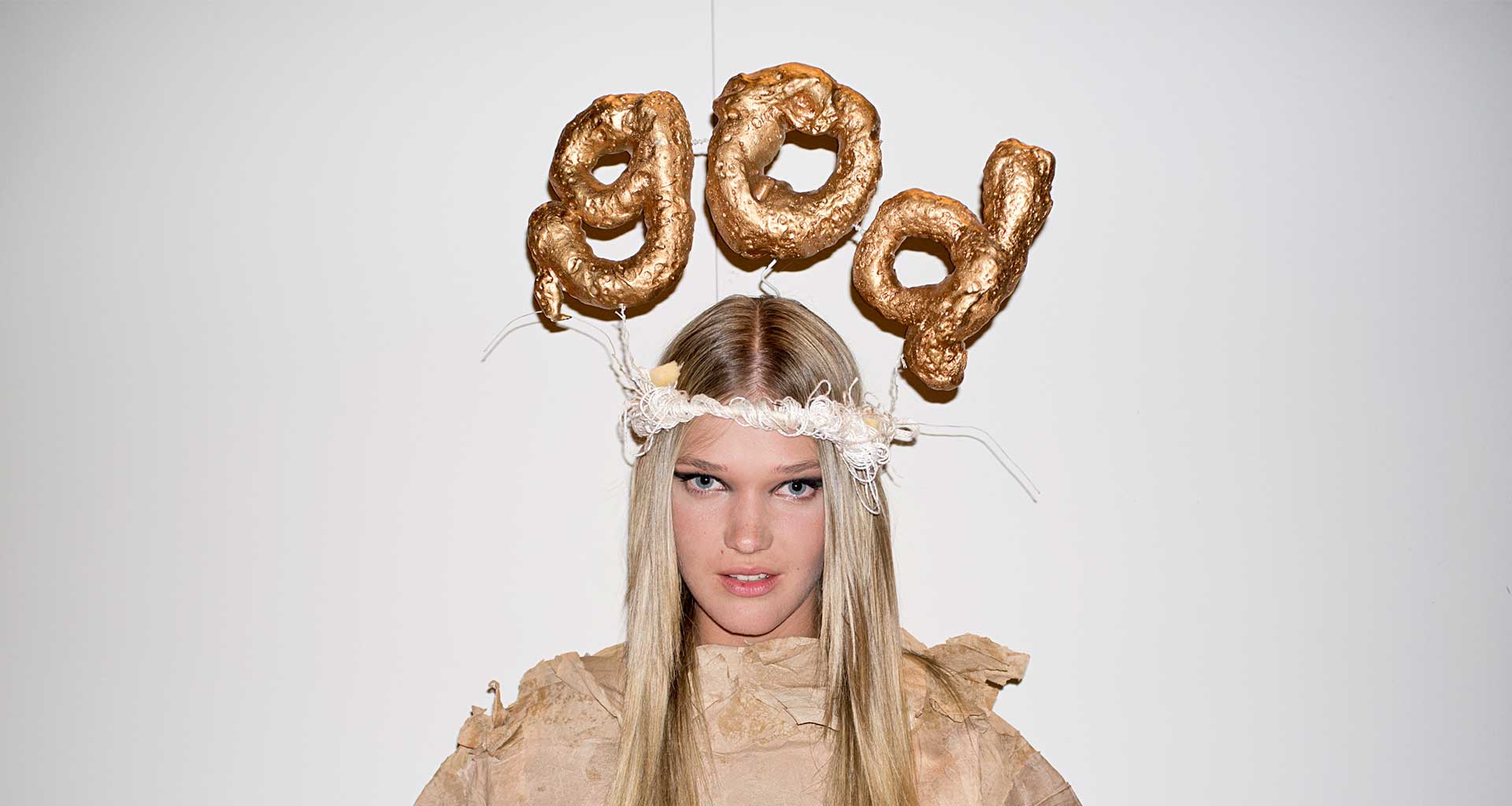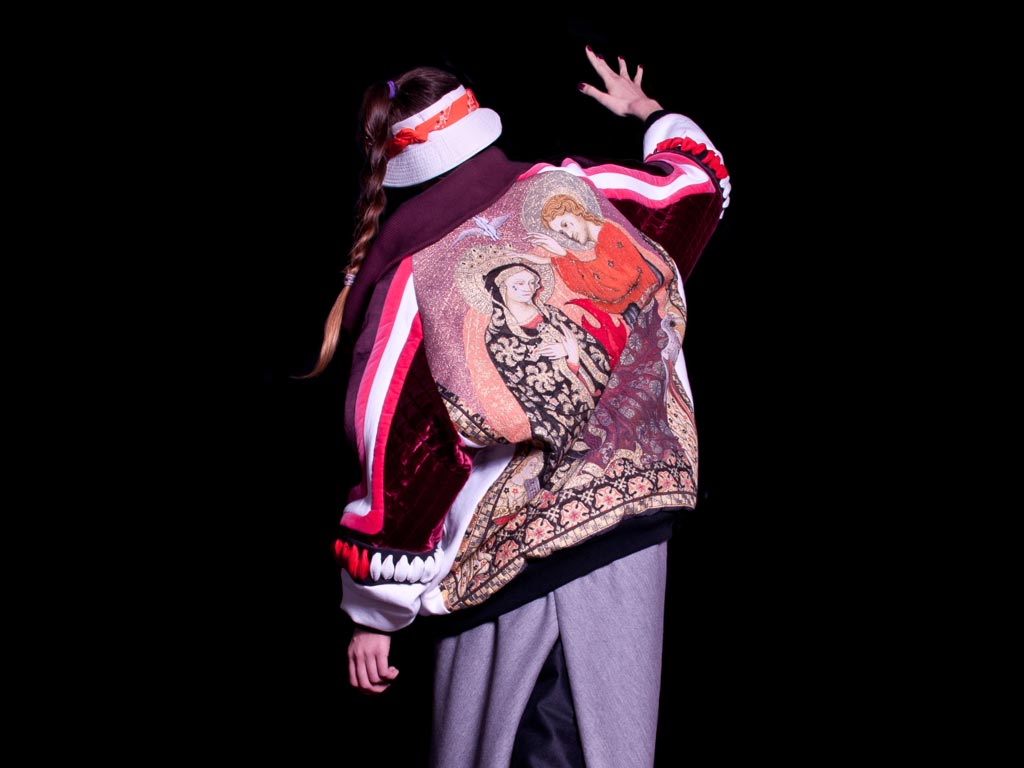
One Collection, infinite stories: Religion. Looking at the religious elements of the ITS Arcademy collection.
24 December 2022
Looking for either controversy, beauty, culture or symbolism, it is no mystery why fashion drives inspiration from religion. They are undeniably intertwined: religions and religious orders have dress codes and use fashion to communicate position, sanctity, pureness and the entire spectrum of religious emotions and meaning. And fashion has always been intrigued by how religion exploits human beings’ need to dress in order to communicate spirituality, often going against those codes to provoke or open discussions, other times to explore all possible perspectives.
In the words of curator Andrew Bolton, back in 2018 when the MET organised the exhibition Heavenly Bodies: Fashion and the Catholic Imagination, “Dress is central to any discussion about religion. It affirms religious allegiances, and, by extension, it asserts religious differences.”
Designers from Cristóbal Balenciaga to John Galliano (with his mitre, incense-swinging pope opening Dior’s couture in 2000) have driven inspiration from religion, or were shaped by it like Coco Chanel, who was educated by nuns. And throughout the two decades of ITS Contest we’ve seen young talents challenging themselves with the topic, in a great variety of ways. Let’s discover a few.
In the case of Taro Horiuchi, a Hogenschool Antwerpen graduate who won ITS back in 2007, religion can become investigation, a search for God conducted by looking at clothing and symbols. In that collection he had researched primitive African religions, art pieces, tattoos and colours, from which he extracted futuristic geometric forms, combining this with sportswear and tailoring techniques. The selection of a particular material can carry a message: his use of transparent fabrics was intended to represent religious feelings, seeking to capture the atmosphere of a solemn, quiet and beautiful time. Indeed a kind of “Clothing Religion”, dedicated to spiritual elevation.

ITS 2018 finalist Filippo Soffiati takes us into an entirely different way of looking at religion. With his collection we are transported back to his childhood experience of stepping into a church for the first time. He recreates the wonder of the motionless bodies emerging from the shadows, a crowd of statues both watching and indulging stares. An ode to religious art and to the mesmerising power of statues depicting the anatomy of the human body. And his outfits are all focused on the body: simulated or real, veiled or hidden. Clothes in Filippos case become a second skin, protecting what is underneath. Paddings, lightly veiled with silk organza, outline muscles and the chest. Floating drapes are frozen and fixed to the dress. Cuts and wounds turn into precious, aesthetic details. A hypnotic religion of the aesthetic.

Religion often forges our education, shaping our society, our culture, and how we relate to others. Shay Tako, a finalist in the artwork contest of ITS in 2015, tackled precisely this aspect with his project. We’re not in the field of fashion here, at least not in the traditional way. Because what Shay presented was an installation of masks. Faces depicting different cultures and religions through the jewellery, accessories and facial traits that define them. The public was invited to interact, to experiment the freedom of impersonating whatever culture or religion they like. Religion as a free choice, not as something dictated at birth.

Religion can be involved in the elaboration of trauma, as in the case of Aharon Genish (ITS 2020). As a child who grew up in an ultra-Orthodox family, Aharon was educated in Torah studies. It was the high-grade rabbi who decided to cherish him and make him his Chavruta (learning companion) every evening. But these meetings turned into the background for sexual abuse.
His collection therefore reflects the profound emotional journey he has been through, from the eyes of a child who has undergone shock, then revenge and finally acceptance. It symbolises his daily pledge to unveil abuse rather than hide it, encouraging others to do the same. This is a look into the traumas that can originate from religion, and how fashion can help in healing from the pain, in not being silenced by trauma.
Imagine a band of gangsters breaking into a church and plundering its symbols, fabrics and ornaments, in order to make their own protective armour – which reveal the urban origins of the wearer – to clothe themselves in a sacred and all-powerful aura, to survive and reign over the urban landscape. The analytic development of storytelling is at the core of the research and work methodology for this project by Nelly Hoffmann, ITS 2013 fashion finalist. Researching outfits of hip-hop icons such as Run DMC and Booba, street kings on their own personal crusade, Nelly uses religious iconography – like prints of Santa Rita, the saint of desperate situations – mixing it with gangster and hip-hop style in a collection that rubs shoulders with costume design for the movies. Religion as a storytelling opportunity.

And storytelling is also at the core of ITS 2006 finalist Aitor Throup’s winning collection “When Football Hooligans become Hindu Gods”, driving its religious references from Hinduism and its pantheon of gods. In the story that triggered the entire development process, a group of hooligans begin to doubt their deep rooted beliefs in organised violence within the underworld of football club loyalty. A racist attack is the episode that triggers a reflection into the negative reality of a violent lifestyle. Referencing the anatomy of the human body in specific postures, the uber-functionality of military garments and brands like CP Company and Stone Island, Aitor showcased each character’s individual attempt to rise from the ashes transforming into a hindu god. Every outfit represents a specific hindu god from Shiva to Ganesh, Skanda, Narasimha, Hanuman, Airavat and Varaha. Religious references to the specific deities are all over the outfits: the soles of the shoes are red (an indication of divinity in Hindu religion) and iconographic elements such as Shiva’s skulls or Ganesh’s elephant trunk turn into functional elements of Aitor’s outfits. Religion as aesthetic functionality.

One of hundreds different ways to dig in analytically into the ITS Collection, religion in the work of our past finalists shows its multi-faceted ability to inspire creativity, allowing for infinite approaches and references. From purely aesthetic codes to more complex symbolisms, it proves to be connected to fashion as two sides of the same coin, perhaps. Weren’t Adam and Eve the first to fashion clothing, as a symbol of their embarrassment for the naked body? Perhaps ITS Arcademy could expand such discussions in a future exhibition.
Cover: Outfit by Luke Brooks, ITS 2012